- Home/
- Fighting COVID-19: As India Gears Up For Lockdown 2.0, Here Is How The Lockdown Has Worked So Far In Various States
Fighting COVID-19: As India Gears Up For Lockdown 2.0, Here Is How The Lockdown Has Worked So Far In Various States
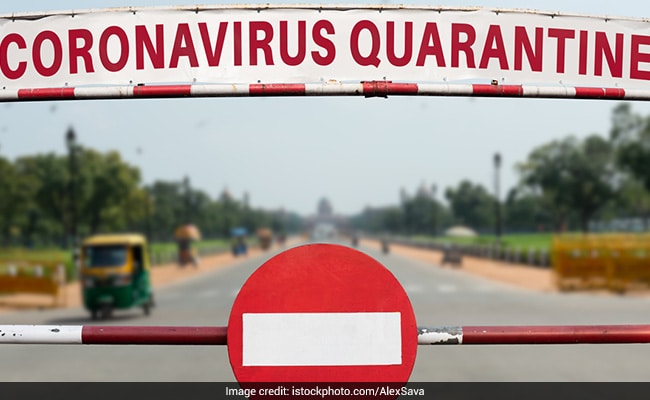
Highlights
- The 21- day lockdown was announced by PM Modi on March 24
- The all-India data shows that lockdown has been successful
- Some states have extended the ongoing lockdown till April 30
The 21- day nationwide lockdown which was announced on March 24 by Prime Minister Narendra Modi put 1.3 billion people of India under restrictions, making it the world's largest social distancing measure. The aim of the lockdown was to slow down the transmission of coronavirus which has infected nearly 2 million people across the globe with more than 1.14 lakh fatalities, as on April 13, according to the World Health Organization (WHO). While the nationwide lockdown had a rocky start in India with lakhs of migrant labourers and urban poor losing their daily livelihood and hitting roads leading out of the cities to their far-flung villages on foot, but the data reported by the Ministry of Health and Family Welfare (MoHFW) shows that as far as the outbreak goes, the lockdown has worked and may have flattened the curve to some extent, especially in certain states. As the country completes its three weeks of lockdown, many state governments have indicated at an extension of the social distancing norms in a bid to further control the transmission.
Here is how the lockdown has worked so far for various states.
The all-India data provided by MoHFW shows that during the initial days of the lockdown, the number of cases was on a rise due to pre-lockdown infections. Once the initial impacts of pre-lockdown infections were over and the lockdown set in, a sharp downturn in the rate of transmission was observed. Therefore, as per the government data, the numbers which were doubling every three days initially have started doubling every six days.
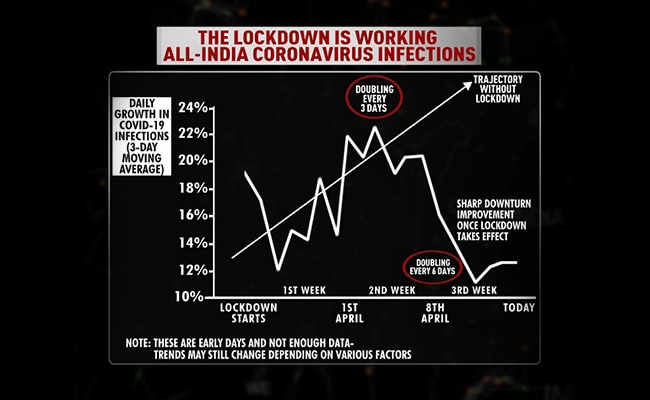
According to Lav Agarwal, Joint Secretary, MoHFW, the country saw a rise in the number of reported cases from 100 to 1,000 in 12 days whereas in other developed countries, COVID-19 cases rose between 3,500 and 8,000 in the same time frame. He said,
We have been able to restrict the number of cases because of the lockdown being followed by the people.
The government has also said that had there been no lockdown, there would been more than eight lakh cases by now.
Impact of the Lockdown On States With Highest Number of Positive Cases
While a decrease in the number of COVID-19 cases in Maharashtra in the first week of the lockdown was encouraging, an upsurge was seen in the second week which continued in the third week as well. With more than 1,900 cases and a rate of infection showing the doubling of cases every two days, COVID-19 is a cause of serious concern in the state of Maharashtra.
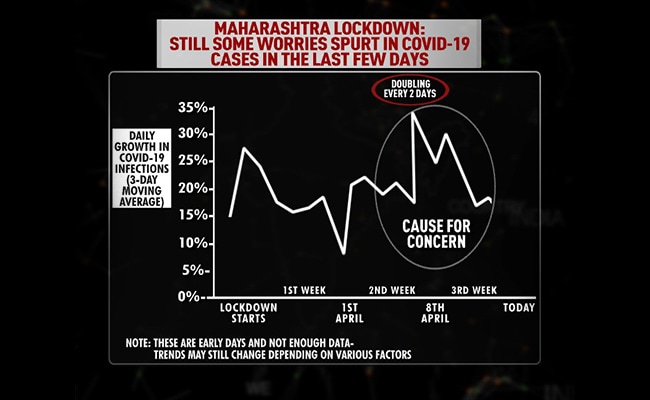
In Delhi, which has more than 1,100 cases of COVID-19 till now, a major impact of lockdown was observed in the second week when the rate of transmission slowed and the doubling of cases went down to every 14 days. However, by the end of the third week the number of cases has shot up and the doubling of cases is happening every five days. However, as per experts, if the lockdown was not imposed, the infection rate would have doubled every day in the capital.
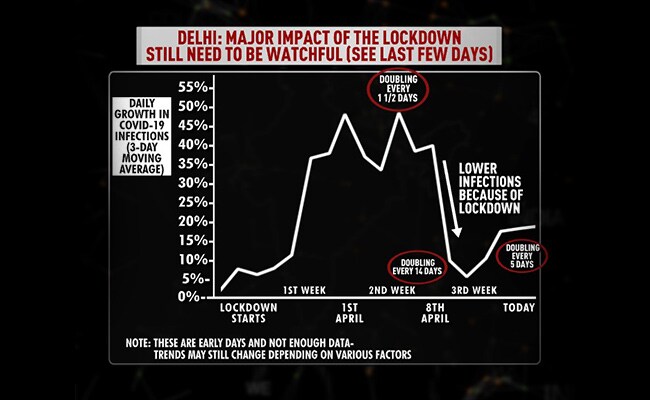
Tamil Nadu, the third-largest state in term of the number of coronavirus cases, experienced a sharp downfall in the number of cases as the second week of lockdown started. The total number of cases in the state, as on April 13 is 1,075. While in the first week, the cases were doubling every one and a half days, by the end of the lockdown, the rate of transmission has been slowed down drastically to doubling every seven days.
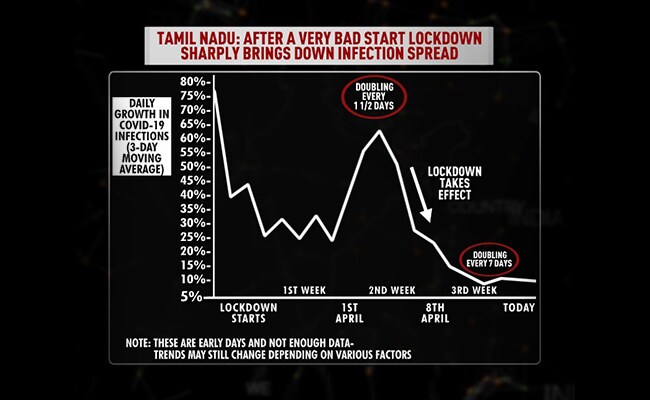
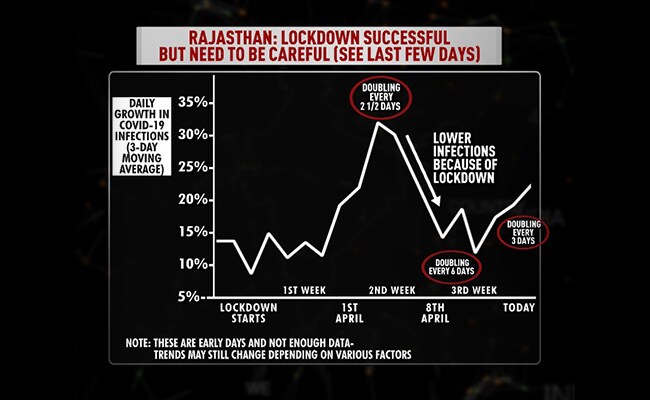
States That Performed Outstandingly To Flatten The Curve
The state of Kerala, which reported India's first COVID-19 case has been most successful in fighting the disease. The state prepared itself even before the first patient arrived in the country and started fighting the virus on a mission mode even before the lockdown was enforced. The infection used to be doubling every three days in Kerala, which came down to doubling every 20 days. The state currently has 376 cases.
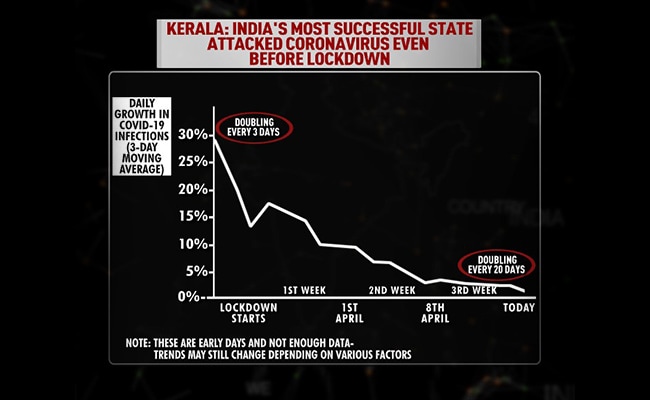
After a massive initial increase, Telangana, which has 504 positive cases, as on April 13, saw a dramatic drop in the growth rate of coronavirus cases post lockdown. Before lockdown, the infection was doubling every two days but after the lockdown was enforced, it has come down to doubling every 14 days, exhibiting positive impact of the lockdown.
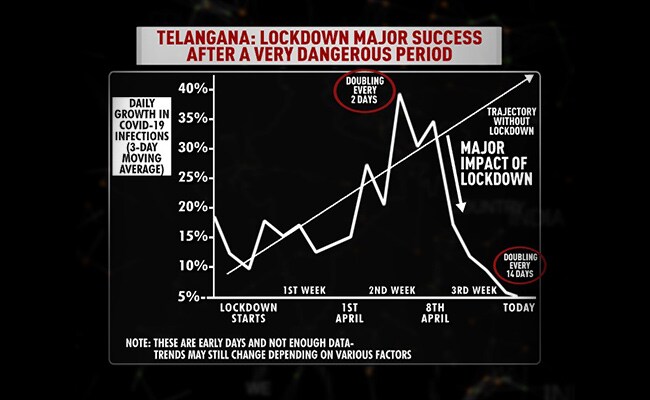
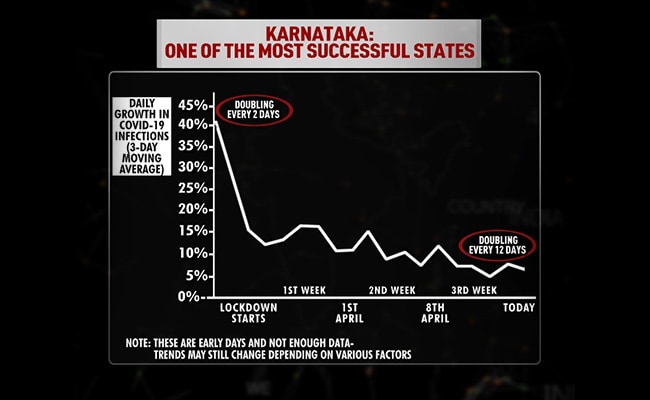
The state of Andhra Pradesh is also among the states that have seen the success of the lockdown. While before lockdown, the infection was doubling every day, by the end of the third week, growth of infection has come down to doubling every 15 days. The state has 427 COVID-19 cases, as on April 13.
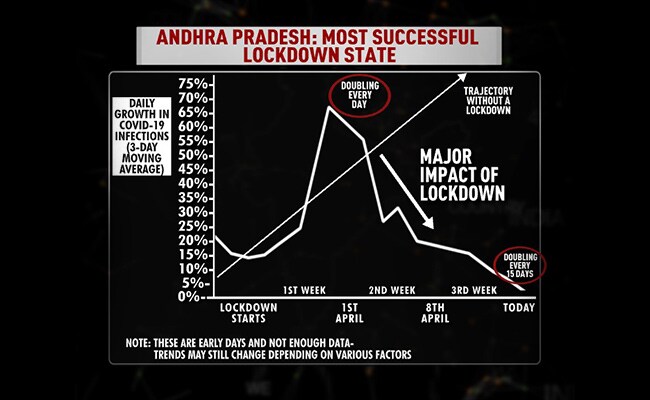
The state of Uttar Pradesh that has 483 cases, as on April 13, has also witnessed a sharp drop in the growth of COVID-19 infection post lockdown. Just like Telangana, the state went from infection doubling every three days down to doubling every 16 days.
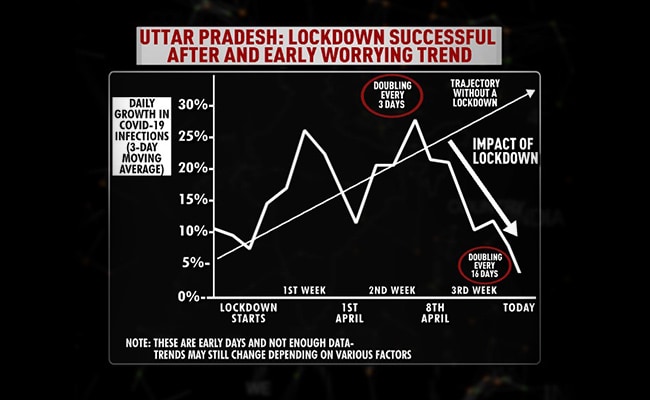
States Where Lockdown Has Worked To Some Extent But Infection Is Still On A Rise
Coronavirus lockdown in Madhya Pradesh has been largely successful. Doubling every one and a half days at the start of the lockdown to doubling every 20 days by the middle of the third week, the state has seen a drastic change in the transmission rate. However, there has been an uptick in the last two days of the third week. A reason for this surge could be that people have started mingling a little earlier before the lockdown came to an end, the reasons are not yet clear. The state has 532 cases of coronavirus as on April 13.
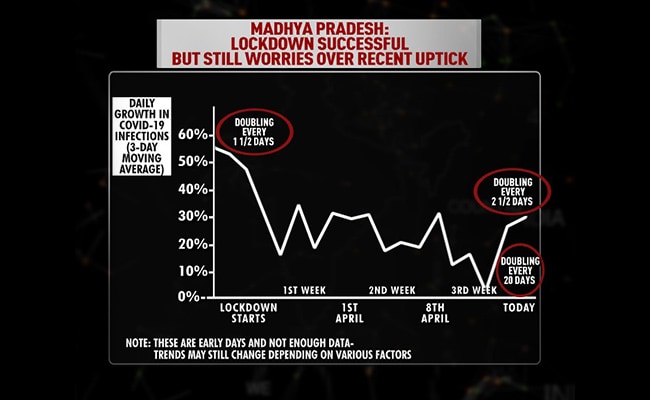
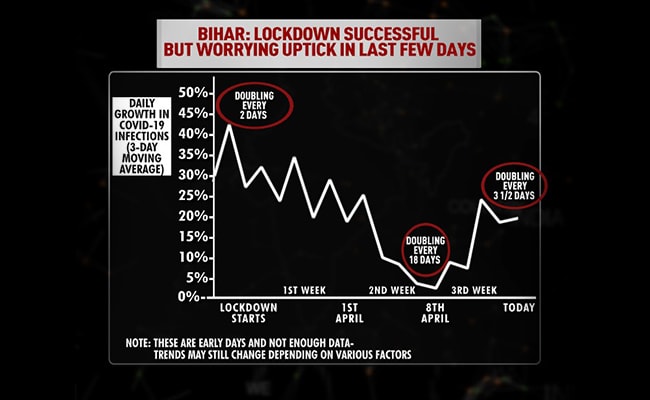
According to the data, Gujarat has seen a negligible impact of lockdown. Initially, the infection was reported to double every five days but by the end of the third week of lockdown, the state is reporting the doubling of infection every two days. Gujarat currently has 516 cases and nothing seems to be working as of now to reduce the transmission rate in the state.
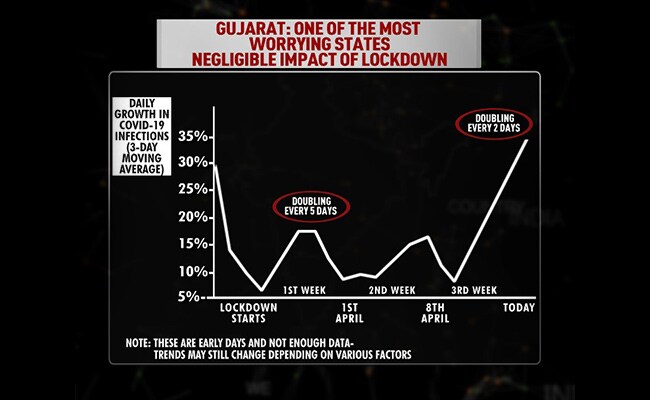
Other States
The first week of lockdown was worrying for West Bengal as the number of cases was doubling every two days but from the second week, the growth transmission saw a downward trend and now the number of cases is doubling every nine days.
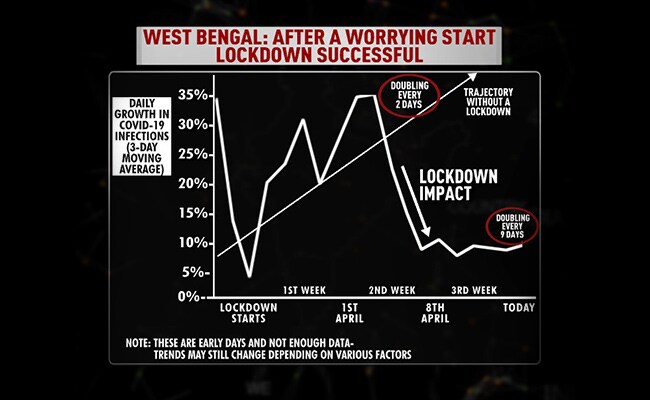
Odisha saw a frightening spurt in the number of cases in the second week with the number of cases doubling every 15 hours. However, by the end of the third week, the state has been able to control the situation and now the cases of infection are doubling every 15 days.
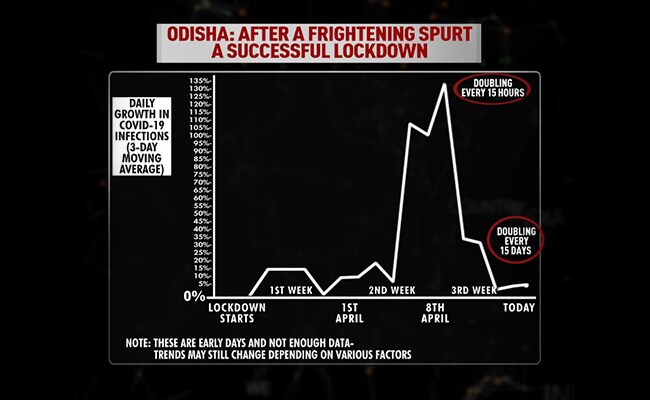
Way Ahead
During his meeting with 13 Chief Ministers on Saturday, PM Modi had agreed that a longer lockdown was necessary to further stem the infection caused by coronavirus. Thus the government is likely to soon announce an extension of the current lockdown. Already states like Telangana, Maharashtra, Punjab and Odisha have extended the lockdown till April 30. The new virus has infected more than 9,000 people in the country till now. Since the restrictions have put lakhs of poor people out of work, the government may experiment easing up the lockdown norms in a staggered manner to reduce the impact of the lockdown on livelihoods.
also read
Despite Nationwide Lockdown, People Employed In Health And Financial Sector Continue To Provide Services
Written by Ambika Singh KahmaHow Police Officers Are Battling The Crisis Of Coronavirus And Going Beyond The Call Of Duty
Written by Ambika Singh Kahma28-Year-Old From UP Donates Disability Pension Money To COVID-19 Fund, Urges Others To Help The Cause
PTI
Telethon Highlights
MoreQuick Links
More- NDTV News Desk | Thursday April 02, 2020
Prime Minister Narendra Modi today announced a total lockdown in India from midnight for 21 days to fight the spread of coronavirus.
- NDTV News Desk | Friday April 03, 2020
India must also straight away allow internationally-recognized testing kits to be used here - these are already in use in the USA and Europe (do not delay by waiting for Indian clearance).
- Written by Garima Arora | Sunday April 12, 2020
Coronavirus outbreak: Take necessary precautions. Practise personal hygiene and social isolation. Utilise this time to do all the things you never found the time to do earlier. Here are some more tips to maintain your mental health by Psychiatrist Dr Sanjay Chugh
- NDTV News Desk | Thursday April 02, 2020
Hopefully, you are following social distancing and not mingling, especially with large groups or in crowded places. Can wearing a mask help? Here's what doctors say:
- NDTV News Desk | Thursday April 02, 2020
People across the world are worried about the rising cases of COVID-19, a highly contagious disease caused by the Novel Coronavirus that was first detected in China's Wuhan in December last year. What should you do if you're feeling any little ill, flu-ish and you are worried that you have symptoms of coronavirus?
- Edited by Deepshikha Ghosh | Thursday April 02, 2020
Coronavirus India: Airlines have been asked to ensure distance at check-in counters and enough space as passengers wait for their flights








